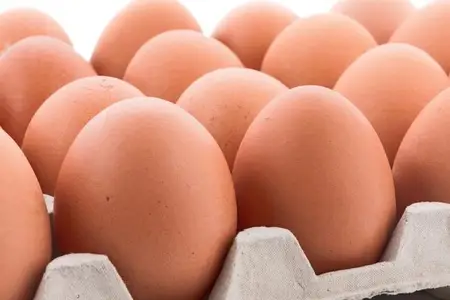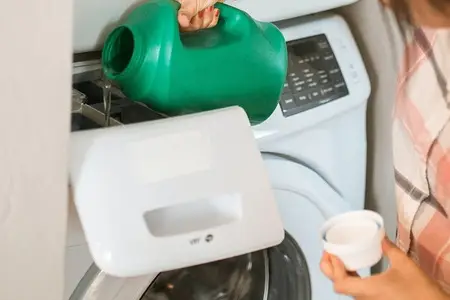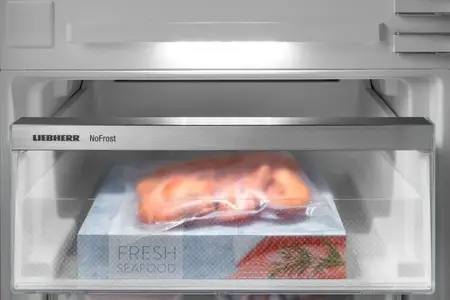How long does cooked rice last? When stored properly in the refrigerator, about two days. In this article about rice, you’ll learn how to extend shelf life and minimize health risks.
Key Points at a Glance
- When properly stored in the refrigerator, cooked rice stays fresh for up to two days, but requires rapid cooling and airtight containers.
- Freezing cooked rice extends its shelf life up to six months; proper preparation is crucial for quality after thawing.
- When reheating, rice should be heated above 70 degrees Celsius to avoid health risks, and repeated reheating should be avoided.
How Long Does Cooked Rice Last?
The question of how long cooked rice lasts is important for many of us. After all, you want to ensure your food stays fresh as long as possible while avoiding health risks. When stored properly in the refrigerator, cooked rice can last up to two days. However, this is only guaranteed under certain conditions.
To maintain the freshness of cooked rice, you should follow these points:
- Don’t keep rice in the refrigerator for longer than a few days.
- Quick cooling after cooking is important.
- Using airtight containers prevents moisture and pests from entering.
It’s important to note that the shelf life of cooked rice can be affected by various factors. For example, the type of rice, cooking method, and even ambient temperature can play a role. Therefore, you should always ensure to store rice under optimal conditions and cool it as quickly as possible after cooking.
In summary, cooked rice can last up to two days when properly stored in the refrigerator. However, this requires quick cooling and the use of airtight containers. By following these simple steps, you can ensure that your cooked rice stays fresh and edible for as long as possible.
Proper Storage of Cooked Rice
One of the most important steps in proper storage is rapidly cooling the rice after cooking. This prevents the growth of bacteria that can thrive at room temperature.
Another important aspect is storing cooked rice in the top compartment of the refrigerator. This area typically maintains the lowest temperatures, which extends the shelf life of rice. The refrigerator temperature should ideally be below 5 degrees Celsius to prevent bacterial growth. Freezing can also be an option to increase shelf life.
To protect the rice from moisture and pests, you should store it in airtight containers. An advanced option is vacuum sealing, where the container is placed under negative pressure to avoid any contact with air. This can further extend the shelf life of rice and preserve its quality. A vacuum sealer can be very helpful for this purpose.
The proper storage of cooked rice requires a few simple but effective measures:
- Rapid cooling
- Refrigerator storage
- Use of airtight containers These measures ensure that your rice stays fresh for a long time and health risks are minimized.
Freezing Cooked Rice
Freezing cooked rice is an excellent method to extend its shelf life and avoid food waste. Before freezing rice, you should cook it only until al dente to ensure that the consistency is maintained after thawing.
After cooking, the rice should first be cooled before freezing. This can be done by simply spreading the rice on a large plate or baking sheet. Afterward, you can package the rice in portions in freezer bags. This method makes it easier to later remove the desired amount.
Freezing cooked rice is thus a simple and effective way to extend its shelf life and make meaningful use of leftovers. With proper preparation and freezing methods, you can ensure that your rice remains fresh and tasty even after thawing.
Reheating Cooked Rice
Special care should be taken when reheating cooked rice to avoid food poisoning. The rice should be heated to above 70 degrees Celsius to ensure that all potentially harmful bacteria are killed.
One method for reheating is heating in a water bath:
- The rice is heated in a suitable container in hot water.
- This method prevents the rice from drying out.
- It is particularly gentle.
- This preparation method preserves the consistency of the rice.
For a faster method, you can reheat the rice in the microwave. The rice should be heated in a suitable container at medium heat until it steams. To prevent drying out, the container can be covered with a damp cloth.
It is important to avoid repeatedly reheating rice, as this can promote the formation of harmful bacteria. By reheating once and thoroughly, you can ensure that your rice remains safe and enjoyable.
Using Leftover Rice
Leftover rice doesn’t have to end up in the trash. There are numerous creative and tasty ways to make good use of leftover rice. A popular method is using leftover rice for pan-fried dishes. Rice from the previous day is particularly suitable as it develops more flavor when fried.
Sweet variations are also a great idea for using leftover rice. An apple rice casserole, for example, offers a delicious dessert option. For savory snacks, you can prepare rice patties, which provide a tasty vegetarian alternative to traditional meat dishes and pastries.
Leftover rice is also excellent as an ingredient in soups, adding extra flavor and satiety.
By creatively using leftover rice, you can not only avoid food waste but also bring new and exciting dishes to your kitchen. Let your creativity run wild and discover the many possibilities of how you can make meaningful use of leftover rice.
Tips for Preventing Spoilage
To prevent spoilage of cooked rice, it’s important to follow certain hygiene rules and storage tips. Bacillus cereus is a bacterium that can produce toxins in foods like cooked rice, which may cause health problems. This bacterium thrives particularly well in foods kept warm, which is why starchy foods like rice pose a high risk.
The optimal temperature for Bacillus cereus growth is between 28 and 35 degrees Celsius, which increases the risk at room temperature.
Rapid mold growth and yellowed rice grains are signs that cooked rice has become inedible. The water content makes cooked rice a highly perishable product, so it should always be stored under optimal conditions.
By following these simple tips, you can ensure that your cooked rice stays fresh longer and health risks are minimized. Good storage and hygiene are key to getting the most out of your leftover rice.
Summary
Cooked rice can be kept in the refrigerator for up to two days when stored properly. To ensure the freshness and safety of the rice, it’s important to cool it quickly and store it in airtight containers. Freezing rice is another effective method to extend its shelf life and avoid food waste.
Through creative repurposing of leftover rice and following hygiene rules, you can ensure that your cooked rice stays fresh for longer and health risks are minimized. Let your creativity flow and discover the selection at SirPlus!
FAQ – Frequently Asked Questions About the Shelf Life of Cooked Rice
How long does cooked rice last in the refrigerator?
When properly stored and quickly cooled, cooked rice stays fresh and edible in the refrigerator for about two days.
Can I freeze cooked rice?
Yes, cooked rice freezes well and can last up to six months this way. Make sure to cook it only until al dente and cool it thoroughly.
What’s the right way to reheat cooked rice?
Heat the rice to at least 70 degrees Celsius to avoid health risks. Microwave or water bath methods work well, and repeated reheating should be avoided.
What happens if I leave cooked rice at room temperature for too long?
The bacterium Bacillus cereus can multiply and produce toxins that can lead to food poisoning. Therefore, rice should not be left at room temperature for more than two hours.
How can I make good use of leftover rice?
Leftover rice is suitable for stir-fries, soups, rice patties, or even sweet casseroles. This helps you avoid food waste and create delicious dishes.
Is vacuum packaging useful for cooked rice?
Yes, vacuum packaging can extend shelf life by minimizing contact with air and preserving quality. A vacuum sealer is helpful for this purpose.
Can I store cooked rice together with other foods like meat or vegetables?
It is recommended to store rice separately in airtight containers to avoid cross-contamination and maximize shelf life.





